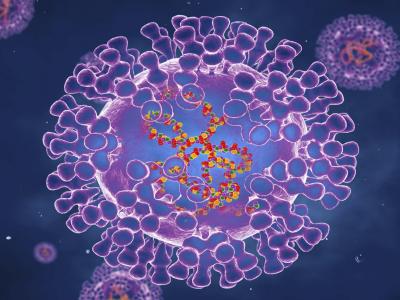Machine Learning

CAPTCHA (Completely Automated Public Turing Tests to Tell Computers and Humans Apart). Only humans can successfully complete this test; current computer systems cannot. It is utilized in several applications for both human and machine identification. Text-based CAPTCHAs are the most typical type used on websites. Most of the letters in this protected CAPTCHA script are in English, it is challenging for rural residents who only speak their native tongues to pass the test.
- Categories:
 1751 Views
1751 ViewsPlease cite the following paper when using this dataset:
N. Thakur, K. Khanna, S. Cui, N. Azizi, and Z. Liu, “Mining and Analysis of Search Interests related to Online Learning Platforms from Different Countries since the Beginning of COVID-19” [Unpublished Paper - Paper submitted to HCI International 2023, Copenhagen, Denmark, 23-28 July 2023]
Brief Description of Dataset file - Interest_Dataset.csv:
Attribute Name: Week
- Categories:
 244 Views
244 ViewsPlease cite the following paper when using this dataset:
N. Thakur, K. Khanna, S. Cui, N. Azizi, and Z. Liu, “Mining and Analysis of Search Interests related to Online Learning Platforms from Different Countries since the Beginning of COVID-19” [Unpublished Paper - Paper submitted to HCI International 2023, Copenhagen, Denmark, 23-28 July 2023]
Brief Description of Dataset file - Interest_Dataset.csv:
Attribute Name: Week
- Categories:
 Views
ViewsPlease cite the following paper when using this dataset:
N. Thakur, K. Khanna, S. Cui, N. Azizi, and Z. Liu, “Mining and Analysis of Search Interests related to Online Learning Platforms from Different Countries since the Beginning of COVID-19”, Proceedings of the 25th International Conference on Human-Computer Interaction (HCII 2023), Copenhagen, Denmark, July 23-28, 2023 (Accepted for Publication)
Brief Description of Dataset file - Interest_Dataset.csv:
Attribute Name: Week
- Categories:
 1268 Views
1268 ViewsPlease cite the following paper when using this dataset:
N. Thakur, K. Khanna, S. Cui, N. Azizi, and Z. Liu, “Mining and Analysis of Search Interests related to Online Learning Platforms from Different Countries since the Beginning of COVID-19” [Unpublished Paper - Paper submitted to HCI International 2023, Copenhagen, Denmark, 23-28 July 2023]
Brief Description of Dataset file - Interest_Dataset.csv:
Attribute Name: Week
- Categories:
 17 Views
17 ViewsDevelopment of the Complex-Valued (CV) deep learning architectures has enabled us to exploit the amplitude and phase components of the CV Synthetic Aperture Radar (SAR) data. However, most of the available annotated SAR datasets provide only the amplitude information (Only detected SAR data) and disregard the phase information. The lack of high-quality and large-scale annotated CV-SAR datasets is a significant challenge for developing CV deep learning algorithms in remote sensing.
- Categories:
 2092 Views
2092 Views
Training data of Human Motion Recognition via Wearable plastic Fiber Sensing System
- Categories:
 20 Views
20 Views
The uncompressed dataset consists in a folder which contains:
- A XML file per author (Twitter user) with 200 tweets. The name of the XML file correspond to the unique author id.
- A truth.txt file with the list of authors and the ground truth.
- Categories:
 144 Views
144 Views
This dataset was created by following these steps. First, online reviews of HMD VR devices are collected and refined. Second, variables are deduced from previous studies, and then appropriate keyword candidates for the deduced variables are selected. Topic modeling is conducted to examine whether the deduced variables sufficiently represent all the reviews, and other variables are added if necessary.
- Categories:
 117 Views
117 Views
Mizo or Lushai language is the official language of Mizoram, a state in the north-eastern part of India. It is an under-resourced language that falls under the Tibeto-Burman language family and is highly tonal in nature.
- Categories:
 127 Views
127 Views



